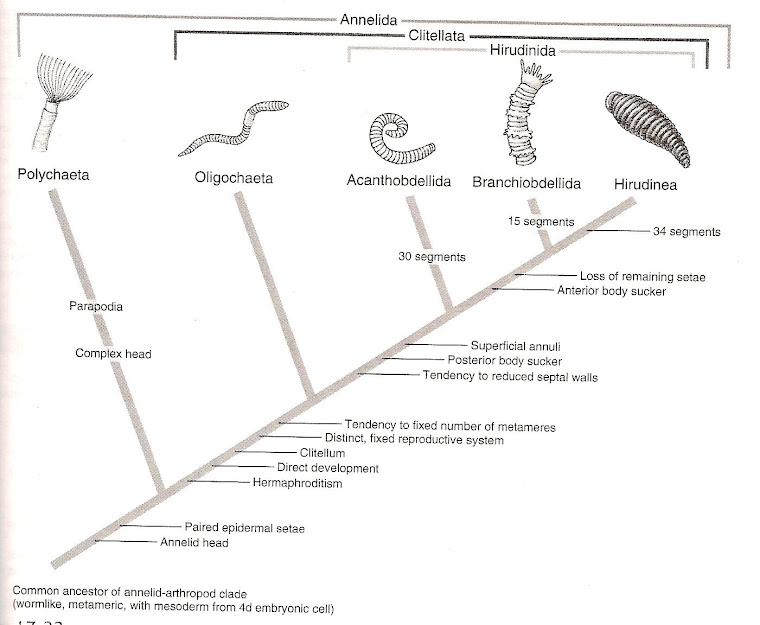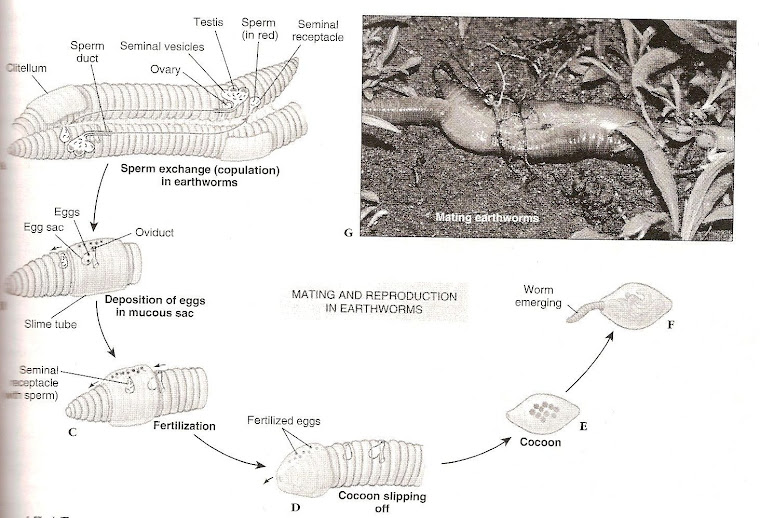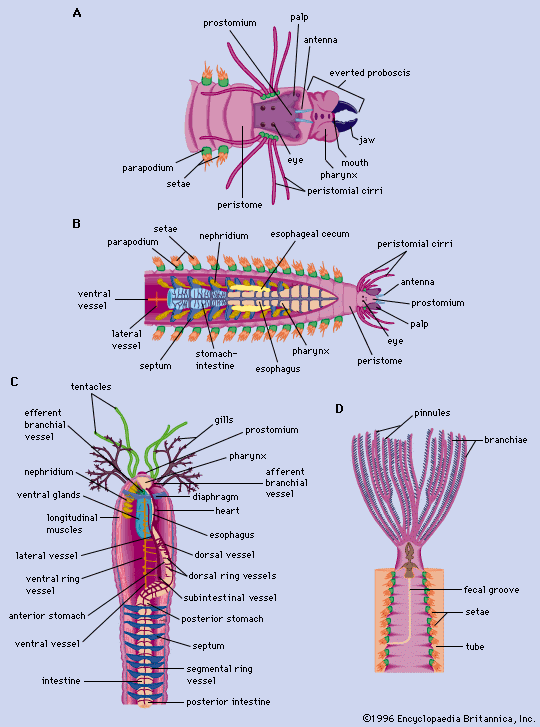Polychaeta swimming
this is a flash animation created by University of Alberta
Annotated Bibliography
· McHugh J D., Fong P, P.. Do life history traits account for diversity of polychaete annelids?. Invertebrate Biology 12 I(4). 325-338.
· The purpose of the article was to see if there was a relationship of polychaete diversity and certain characteristics such as short generation times, high reproductive output, or small body size.
· They gave two possible causes of dominance. The first was the identification of key innovations. A key innovation is a feature whose acquisition is thought to be casually linked to the diversification of a particular group. An example of this would be the bat`s ability to fly. The last was based on a variety of life history traits. These are such ideas as small bodied taxa are often more diverse than large.
· One study cited by the article suggested that the most extreme sized organisms are prone to extinction in variable environments, whereas the small to medium sized would avoid this.
· In study by Slowinski & Guyer in 1993 cited by the article they provided two assumptions that were used in furthering the diversity of polychaete theory. The first assumption was the observed diversity patterns were nonrandom. The second assumption was that there exists a cause and effect relationship between the studied feature and diversity.
· They estimated the number of species of polychaete families from the most recent taxanomic survey. They also collected data from over 200 species from 32 polychaete families. The data was the age at first reproduction, the life span, the body size, fecundity (potential reproductive ability, measured by the amounts of gametes), and egg size.
· It was concluded that almost 50% of all species belonged to 8 of the 76 families. That there were possible biases in the data due to incomplete sampling of the families or the species. There was more data available for the larger families than the smaller ones. The data did show a unified theory of the association between life history traits and taxonomic diversity (which was developed using terrestrial organisms). Therefore, the data for the polychaete phylum was insufficient and thus it could not be generalized for them.
· Light J, E. et al., Egg-feeding in the freshwater piscicolid leech Cystobranchus virginicus (Annelida, Hirudinea) Invertebrate Biology 124(1): 50–56.
· The article discusses the unusual feeding habits of the the piscicolid leech Cystobranchus virginicus. The leech has a modified feeding muscular proboscis to allow for feeding on blood.
· The Piscicola punctata is the only known leech that feeds on the eggs of fish.
· The study area was a ten mile stretch of river of Valley River and another across from the Cherokee River in North Carolina. They sampled along the river at 78 sites on five different days. They used a small shovel and lifted gravel near the surface of the water and then it was dropped in front of a dip net so the eggs and the leechs are passed into the net but not the gravel.
· They found that these leeches preferred habitats with gravel substratum and moderate water flows.
· It was suggested that the effect of the predation on the fish eggs should be studied because of all the conservation issues.
· Garvin M. H. et al., Gametogenesis and reproduction in Hormogaster elisae (Oligochaeta, Hormogastridae) Invertebrate Biology 122(2): 152-157.
· The Hormogaster elisae was studied over a 12 month period. The sex organs were removed by dissection and the gametogenic cycle was documented.
· During the summer the earthworm enters quiescence and the gametogenesis is interrupted. Gametogenesis occurs mostly during the autumn and the winter.
· The weight of the seminal vesicles correlated with spermatogenesis. In the case of oogenesis, there was an average of 6 oocytes per ovary. ( see figure 1)
11 Main Characteristics
1. Body is segmented
2. Body wall with outer circular and inner longitudinal muscle layers: outer transport moist cuticle secreted by epithelium
3. Chitinous setae
4. Closed circulatory system
5. Complete digestive system, not segmentally arranged
6. Coelom well developed and divided into septa
7. Respiration through skin, gills, or parapodia
8. Excretory system typically a pair of nephridia for each segment
9. Nervous system double ventral nerve cord and a pair of ganglia with lateral nerves in each segment. The brain is a pair of dorsal cerebral ganglia with connectives to ventral nerve cord
10. Sensory system of tactile: organs, taste buds, and eyes with lenses
11. Hermaphroditic or separate sexes, larvae, if present are trochopore type, asexual reproduction by budding in some spiral cleavage and mosaic development.







